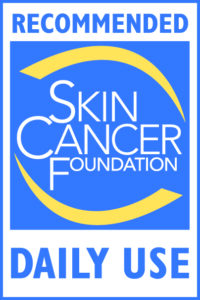UPF Clothing: Dress for Sun Protection
 It’s logical to think wearing clothing protects your skin from damaging UV rays. And while it helps, it’s not fail-safe.
It’s logical to think wearing clothing protects your skin from damaging UV rays. And while it helps, it’s not fail-safe.
“There’s always this assumption that if I’m wearing clothing, my skin underneath the clothing should be just fine,” Dr. Erum Ilyas, a dermatologist at Schweiger Dermatology Group in King of Prussia and Shannondell, PA, tells Philadelphia Business Journal. “There’s a false sense of security.”
But not all clothing is created equally. Skin underneath a long shirt or pants can be damaged by the sun unless you’re choosing fabrics that are densely woven, darker colors, have a silky finish or offer additional Ultraviolet Protection Factor (UPF) protection. That’s where a new generation of UPF-rated clothing is making it easier — and more stylish — to keep damaging rays at bay.
Decoding labels
Just like SPF numbers on sunscreen tell us the amount of time our skin will be protected in the sun, a UPF rating measures how much UV radiation can penetrate fabric and reach your skin.
 According to the Skin Cancer Foundation, a white t-shirt provides a UPF of about 7, but if it gets wet, it provides a UPF of only 3. The foundation awards its Seal of Recommendation to textiles with a UPF of 30 or higher, rating clothing with a UPF of 30 to 49 as “very good protection” and UPF 50+ as “excellent protection.” Search its product finder for clothing that wears its label.
According to the Skin Cancer Foundation, a white t-shirt provides a UPF of about 7, but if it gets wet, it provides a UPF of only 3. The foundation awards its Seal of Recommendation to textiles with a UPF of 30 or higher, rating clothing with a UPF of 30 to 49 as “very good protection” and UPF 50+ as “excellent protection.” Search its product finder for clothing that wears its label.
Smart shopping
When shopping for UPF sun protective threads, Dr. Ilyas, who also founded Amber Noon, a chemical-free UPF clothing line, advises patients to focus on brands that specify that they do not use treated textiles. “Just because we can add sunscreen to textiles does not mean we have to — if the clothing is made with the right fibers and construction, it can offer inherent UV protection without added finishes,” she says.
Finding out how products are manufactured can be a chore, but it’s worth the effort. “The biggest challenge in navigating UPF clothing is that clothing does not come with an ingredient label like skincare products,” she says. “Most sun protective textiles are treated with the same sunscreen products used on our skin and can be either coated with these products or embedded into the textile.”
The goal of clothing should be to reduce the exposure to these products and rely on textiles to protect you, Dr. Ilyas notes. “The challenge is that the UPF of a standard white t-shirt can be as low as a three, so we cannot trust how much protection we are getting from our clothing unless it is tested.” The norm for UPF clothing is 40 washes to ensure the sun protection doesn’t wear off before the natural life of the fabric wears out.
There are not many studies that have looked at the impact of UV finishes on clothing, according to Dr. Ilyas, but there are studies evaluating the impact of chemical sunscreens and their potential health and environmental impact. “The data still seems to point to the benefits of using sunscreens as outweighing the risks,” she asserts.
No matter what you’re wearing, Dr. Ilyas says SPF products are still important to wear on exposed skin. “Clothing cannot consistently cover our entire body. Face, hands and feet are often still in need of added protection from SPF containing products.”
The surest way to stay healthy is to make an appointment with your dermatology provider for an annual skin check. If you notice a change in a mole or anything atypical, see your provider immediately.
Call (844) DERM-DOC to schedule an appointment today or book your appointment online with one of our dermatology providers.
